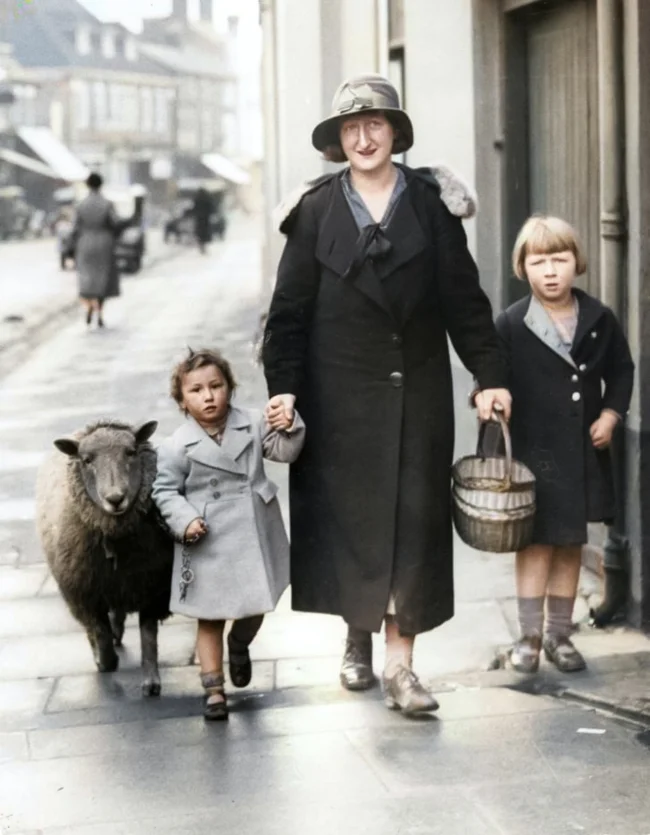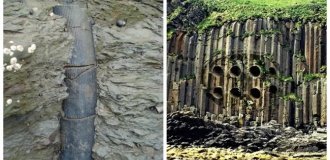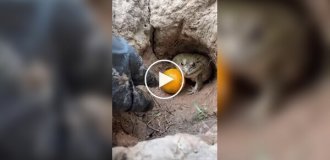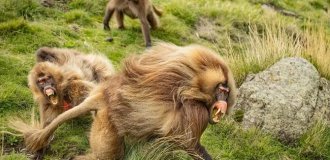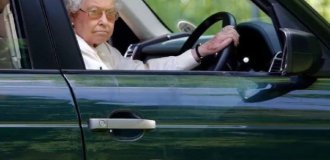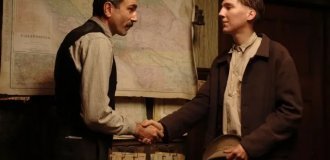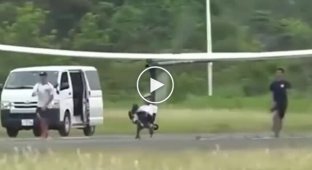Curious photos from the past of Great Britain (21 photos)
A selection of unique and curious photographs from the UK, capturing moments from the early and mid-20th century. All the pictures have been carefully coloured. 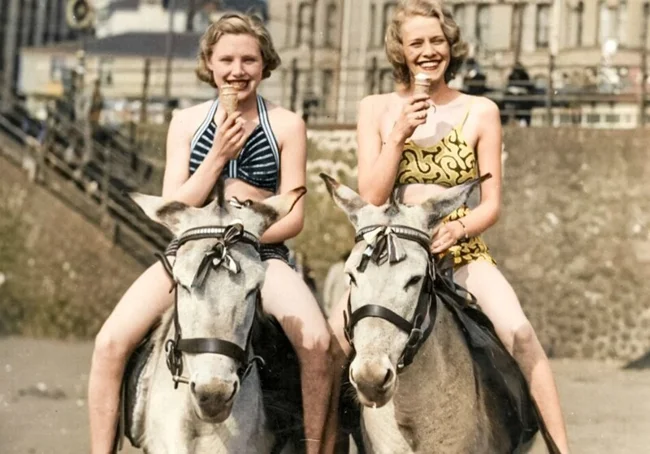
Two boys playing knights on Play Street in London, England, 1947.
In the early 1900s, the streets of London were becoming increasingly busy due to the rise of cars and public transport. For children, especially in working-class areas where parks and playgrounds were rare, the streets were the only place to have fun. However, this created serious risks for their safety. To solve this problem, the first "Play Streets" appeared in London in the 1930s - streets temporarily closed to traffic so that children could play freely. The idea quickly spread to other cities in the UK. Streets were declared "play streets" using special road signs. Traffic on such sections was either completely prohibited or limited to a minimum speed. Temporary restrictions were usually in effect at certain times, such as afternoons or weekends, so as not to interfere with motorists. 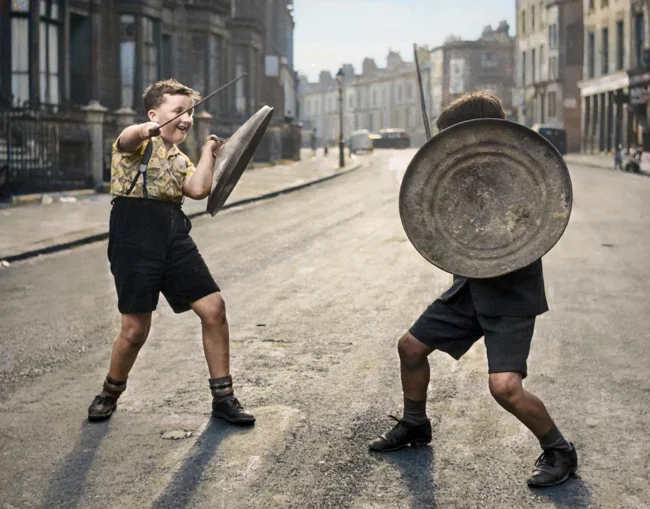
Photographer: John Drysdale.
Princess Anne's teddy bear on a swing, 1956.
Princess Anne is the daughter of Elizabeth II. In 1956, during a visit to Great Britain, the head of the USSR Nikita Sergeyevich Khrushchev made such a gift to Queen Elizabeth II and members of her family. For the royal family, the Soviet delegation brought, in particular: two horses (Akhal-Teke and Arabian breeds); a live bear cub (he was named Nikki, he became a pet of the London Zoo); fur capes; skillfully made chests and boxes; a winter landscape by Igor Grabar (it replaced the originally selected seascape by Aivazovsky from the Tretyakov Gallery funds); diamond brooches. 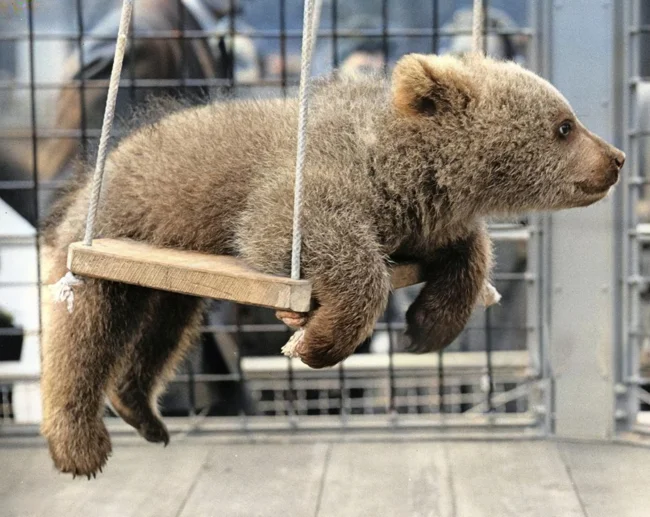
Photographer: William Wanderson
A boy smashing a piano. Wales, 1961. 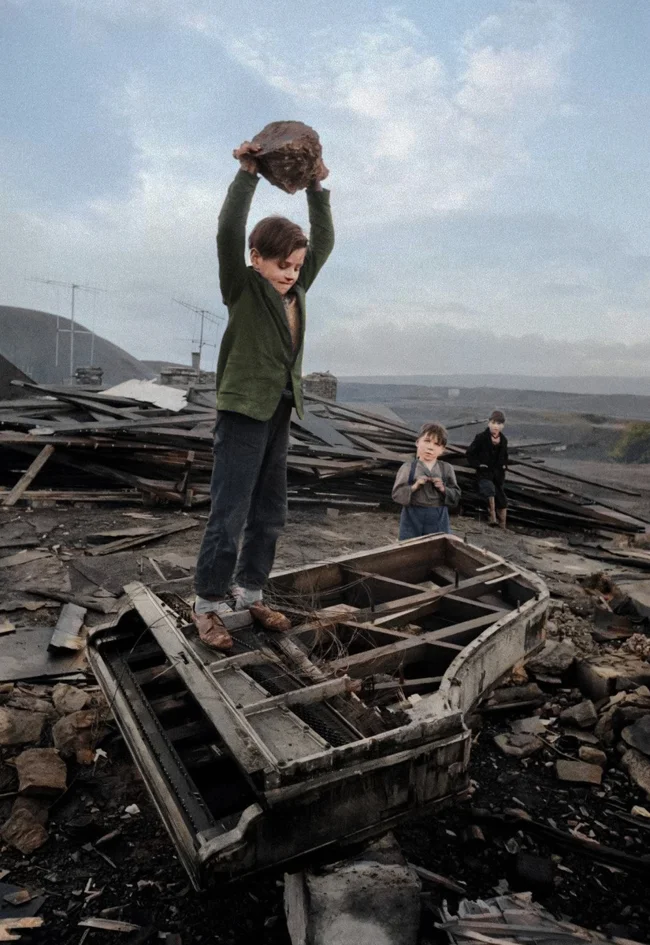
Photographer: Philip Jones Griffiths.
A Sunderland Mark V amphibian aircraft, RAF, at Tower Bridge. London, 1950s.
This iconic aircraft, a combination of aeroplane and marine capabilities, was part of British aviation history. Developed from the military floatplanes of the Second World War, the Sunderland Mark V went on to serve in civilian roles, including patrol, rescue and transport duties. From its position in the heart of London, at the iconic Tower Bridge, the aircraft demonstrated a unique link between military technology and civilian life, highlighting the adaptability of the technology of the time. The image became emblematic of an era when aviation played a key role in the development of both defence capability and civil infrastructure. 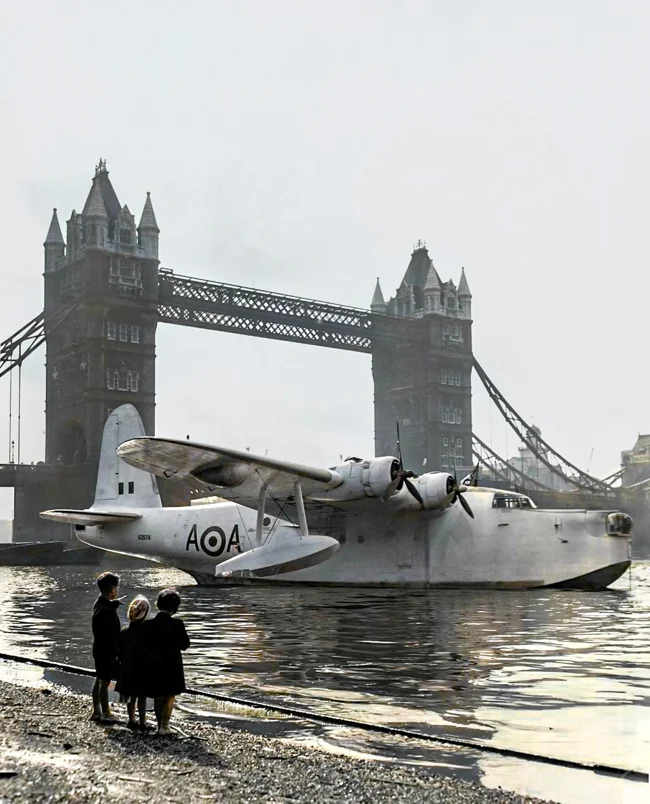
George Dyler, champion beer drinker of the Midlands, 1954.
Drank a pint of beer in 4 seconds. 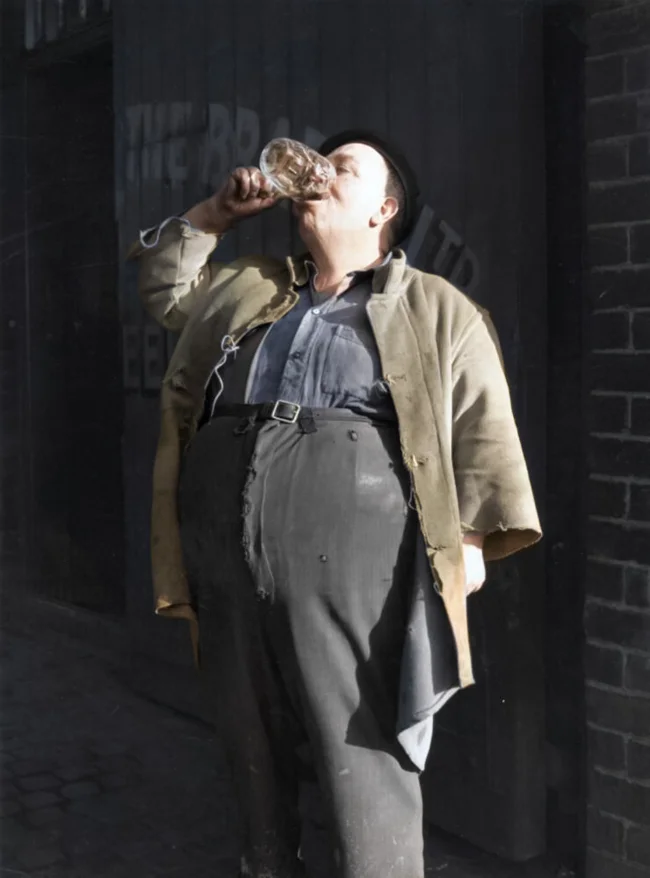
Crossing a river on the way to school. Dumfriesshire, Scotland, UK, 1938.
Schoolchildren Andrew and Sadie McGinley use a chain swing attached to a rope to cross the River Nith. This crossing cuts five miles (8 kilometers) off their journey to school in Enterkinfoot. 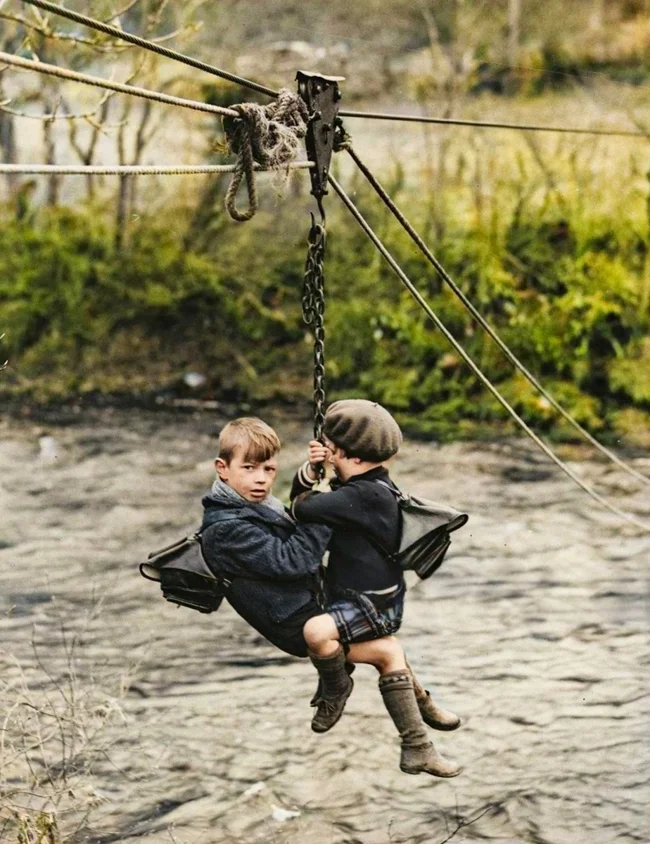
Hats made by Mrssrs. Olney's being carried into the packing room, Bedfordshire, 1933. 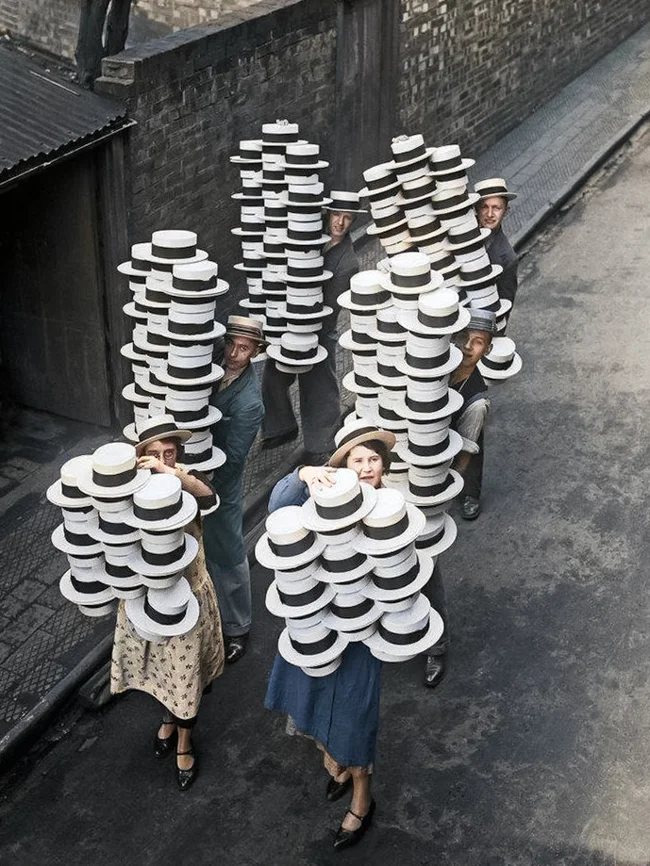
Photographer: William Wanderson
A blind girl playing with a bird, 1952. 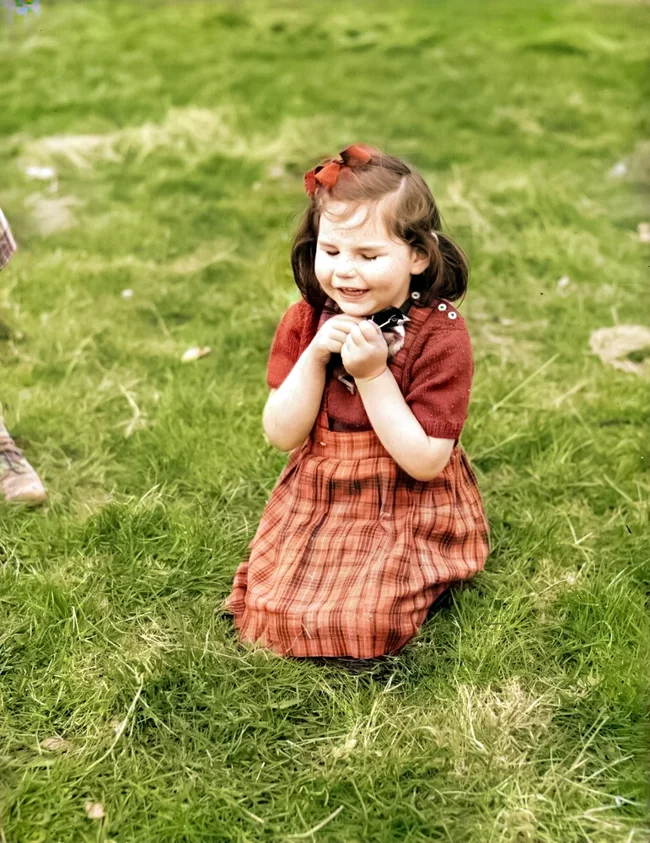
Photographer: Ron Gerelli
Two girls enjoying ice cream while riding donkeys on the sands of Blackpool, 1937.
The 1930s saw a significant shift towards more practical and revealing swimwear. During this period, some styles began to include separate tops and bottoms, although they were still quite modest. For example, in Europe, swimsuits with high-waisted panties and a tight-fitting top appeared. 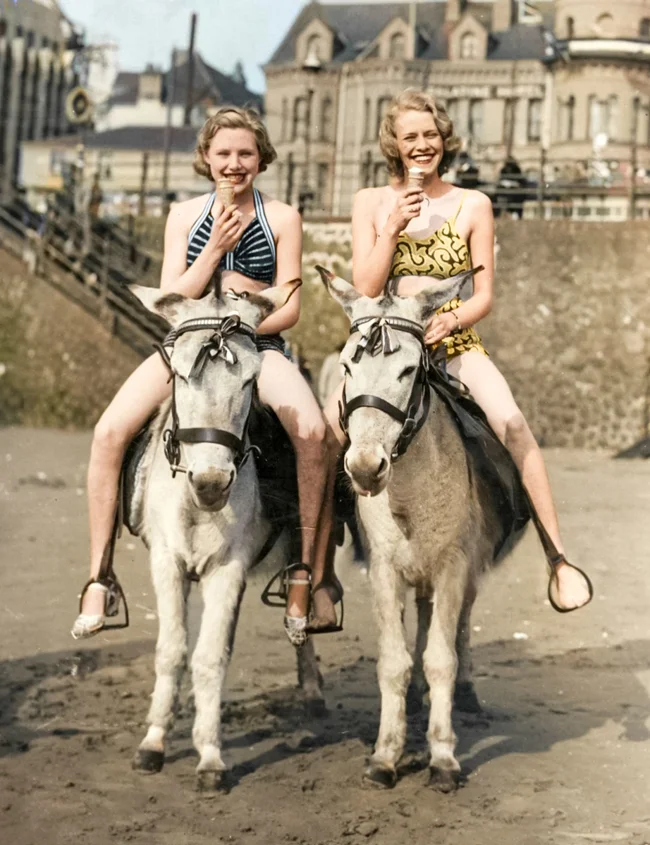
Aftermath of the fire at the Jaguar plant, 1957.
On 12 February 1957, a major fire broke out at the Jaguar plant on Browns Lane, destroying much of the production facilities. The incident was a serious blow to the company, but despite the destruction, Jaguar management showed determination and quickly restored production. 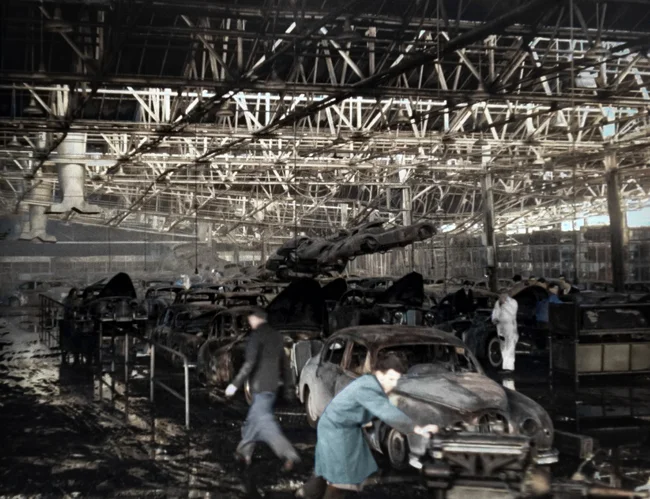
The new A40 Westway in London, 1970.
The banner reads: "Get us out of this hell, get us now." 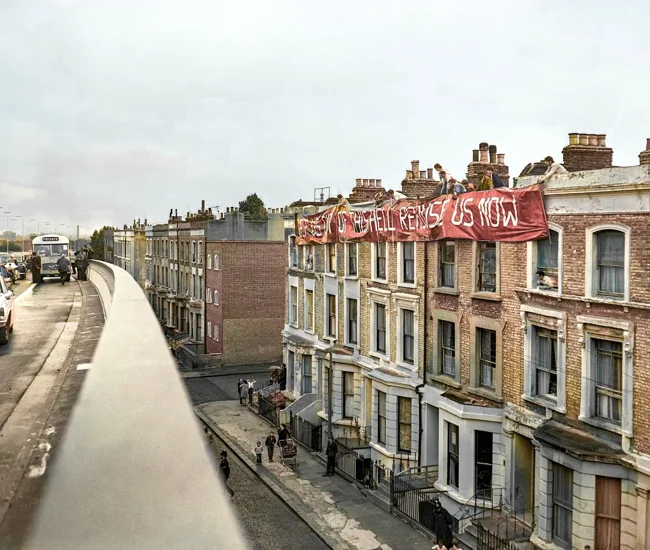
A visitor to Kew Gardens looks at the first spring snowdrops, 1943.
Kew Gardens, or the Royal Botanic Gardens, Kew, is one of the most famous and significant botanical gardens in the world, located in London. This place combines a rich history, scientific significance and picturesque landscapes, attracting millions of visitors every year. The Royal Botanic Gardens, Kew were founded in 1759 as a small garden at the Royal Palace, Kew. Its development began thanks to the efforts of the royal family, especially King George III, who expanded the territory and created a unique collection of plants. In 1840 the garden became an official institution of national importance and its area was significantly increased. In 2003, the Royal Botanic Gardens, Kew were added to the UNESCO World Heritage List. 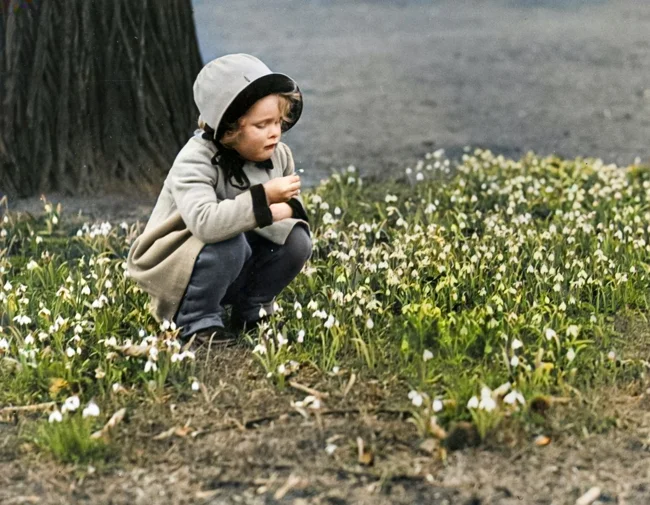
Photographer: Harry Todd
"Long Distance Call".
A baby elephant squeezes into a British telephone box, 1955. Who's speaking? -"Elephant" 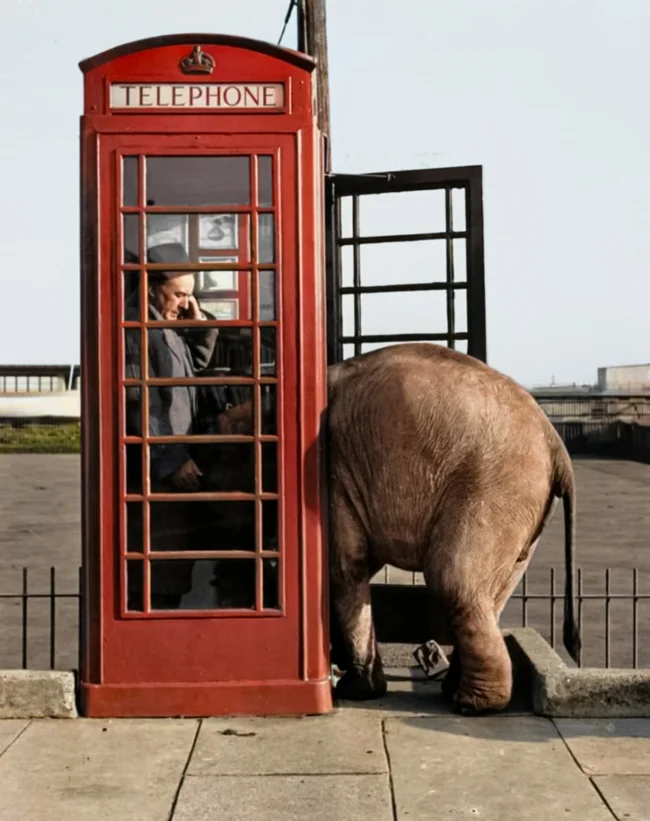
Photographer: John Drysdale
A couple ride a pulley at Hampstead Heath Fair. London, England. 1922. 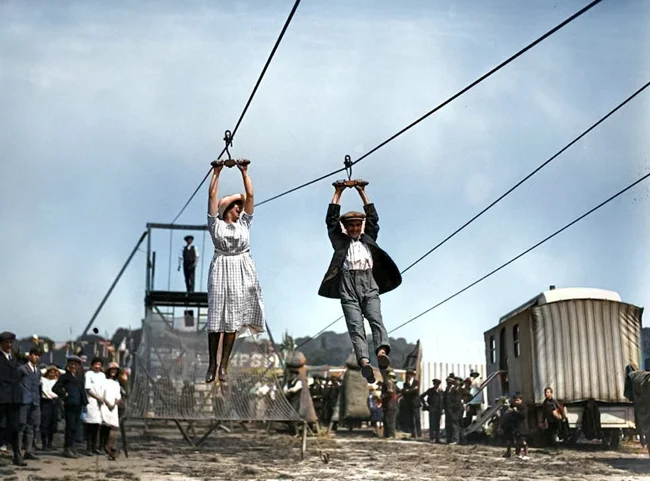
Miners shower after a shift in a coal mine. UK, 1940. 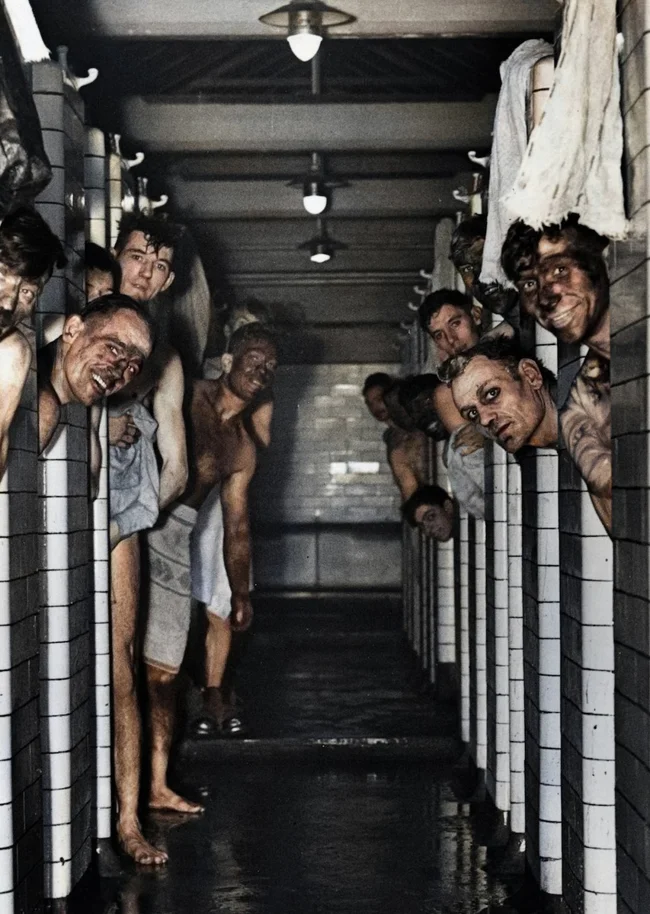
Calder Hall Nuclear Power Station, Sellafield, Cumberland, 1956.
In the foreground is a ring of pudding stones. The use of these stones goes back to prehistoric times. When Christianity came to England, they were often built into the foundations of churches. 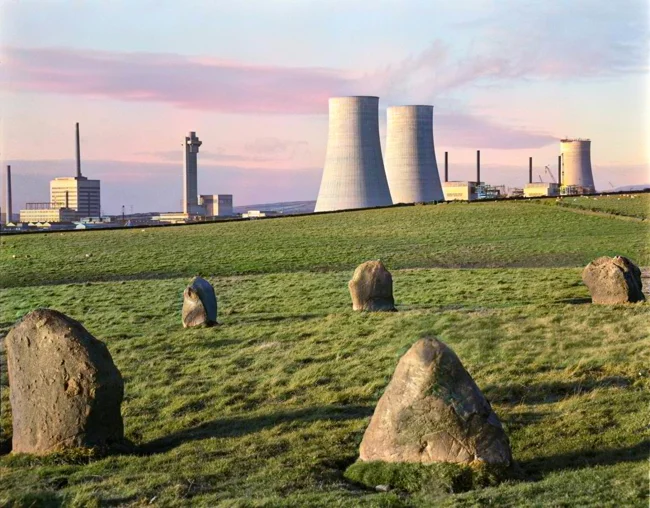
Photographer: Brian Seed
Loughrigg Tarn in the Lake District National Park. UK, 1953. 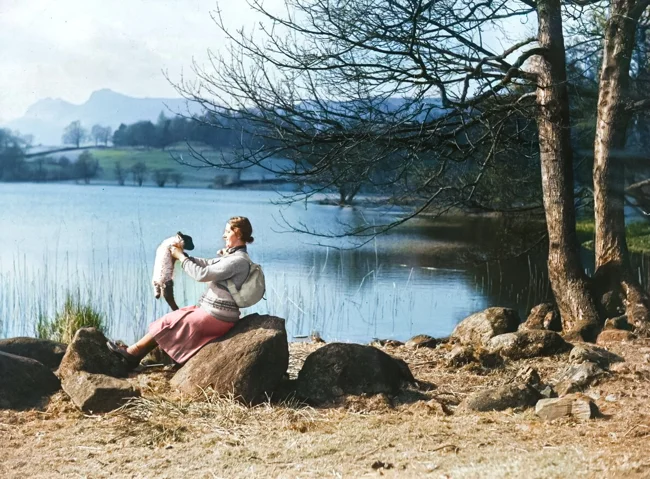
Schoolchildren watching trains at Newcastle station, 1950. 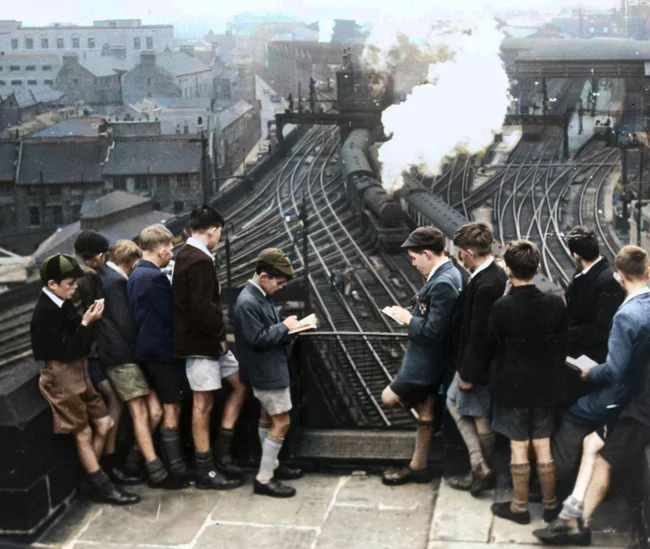
Muscle pumping. England, 1963. Linda Nicole trains under the guidance of Herbert Denis, the 1963 Mr. Jamaica. 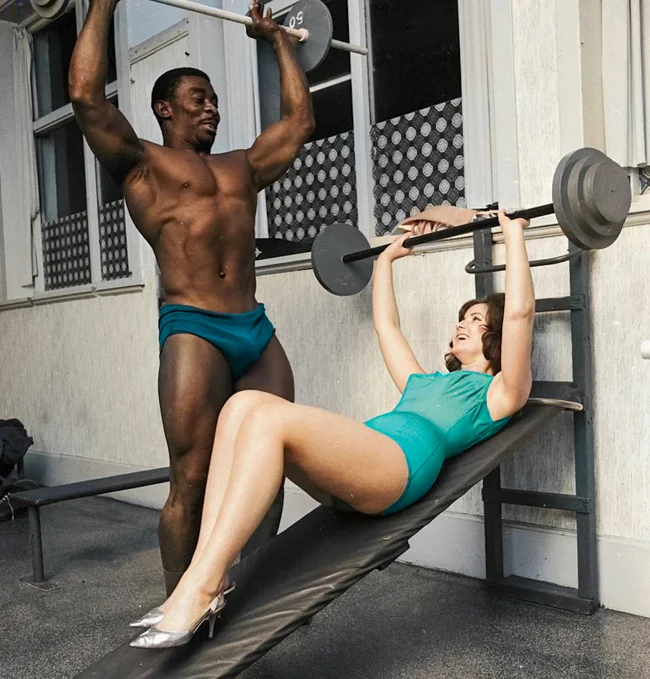
Shopping with children and pet, Alton, England, 1936. 